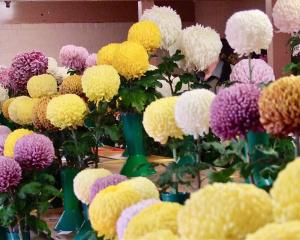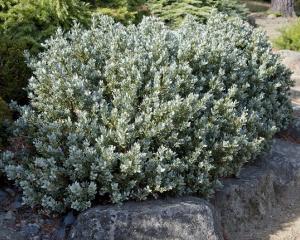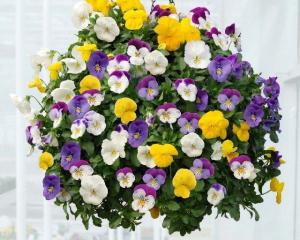That's intentional.
"I've tinkered with this for a long time," he said of his espaliers. "The thing about espalier is it's a work in progress. You can make your own shape. All it takes is time."
Espalier is a method of training trees to grow in two dimensions in an ornamental design, often against a wall. But the trees can be attached to free-standing trellises, like Mr Crum's.
Walls retain heat and help trees produce fruit in climates too cold for traditional orchards.
Mr Crum has experimented with orange and grapefruit trees, though grapefruit proved to be too heavy for the thin branches.
"It doesn't require a lot of space and it's fun, " he said.
He now has five espaliers. Three are grafted apple trees that produce golden delicious, red Macintosh, gala and Gravensteins. One is a golden delicious tree and the other is a grafted cherry tree that produces four varieties.
Nursery manager Larry Parks sold Mr Crum the trees and says: "Typically, they're multi-variety trees so people can get a variety of fruit, not one big harvest".
"It's more of a hobby tree than a production tree."
Maintaining an espalier's decorative design requires some work. The tree wants to grow vertically, and shoots that compete with the design have to be pruned.
And it's best not to let the tree bear fruit until the branches on either side of the trunk are at least a metre long, which requires more pruning, Anju Lucas, a nursery perennial manager, says.
"It's not for the faint of heart," she says. "Anything that dwarfs will take an incredible amount of fussing."
For Mr Crum, it's a labour of love.
"You have to wait until you find the right buds in the right place," he said. "I'm careful not to cut off something I'll need later."
He built his trellises with materials from a hardware store.
Two typical espalier patterns in Mr Crum's garden are the candelabra and Belgian fence, but they're not the only ones possible.
"You can make your own shape. All it takes is time," he said.










